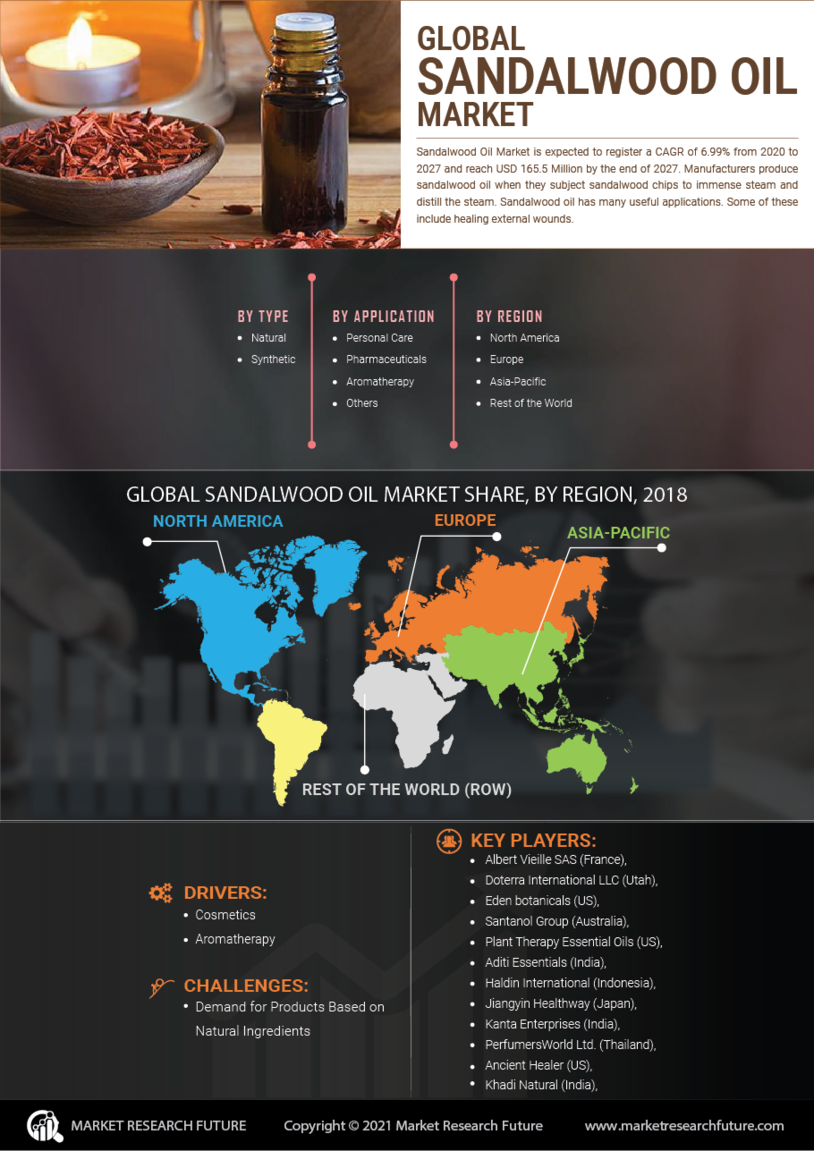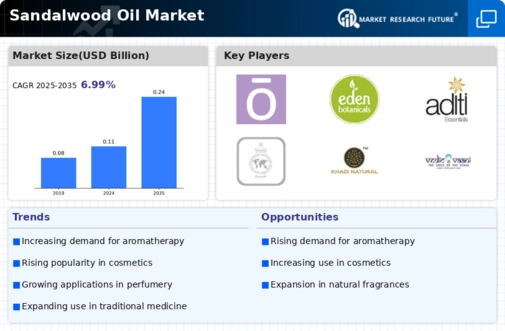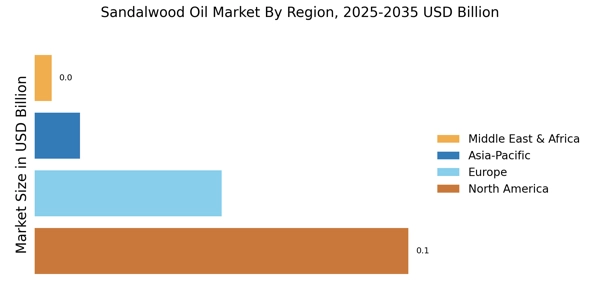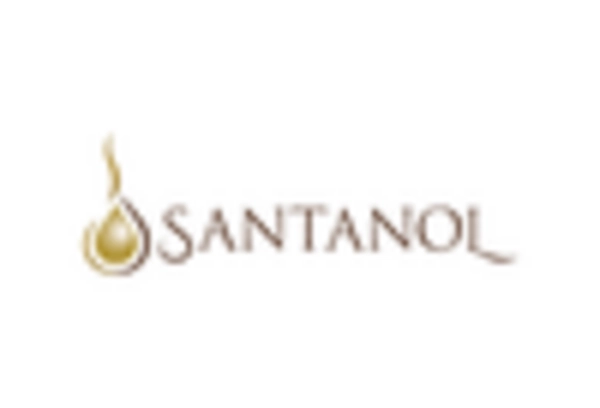Growth in Fragrance Industry
The Sandalwood Oil Market is poised for growth, particularly within the fragrance sector. Sandalwood oil is a key ingredient in many high-end perfumes and colognes, valued for its rich, woody aroma that enhances the overall scent profile. The fragrance market is anticipated to expand, with luxury brands increasingly seeking unique and exotic ingredients to differentiate their products. This trend suggests a potential increase in the demand for sandalwood oil, as perfumers look to create distinctive fragrances that resonate with consumers. The Sandalwood Oil Market may experience a positive impact from this growth, as the allure of sandalwood continues to captivate fragrance enthusiasts and drive sales in the luxury segment.
Sustainability Trends in Sourcing
The Sandalwood Oil Market is influenced by sustainability trends in sourcing practices. As consumers become more environmentally conscious, there is a heightened demand for ethically sourced and sustainable products. Sandalwood oil, traditionally sourced from endangered species, is now being produced through sustainable practices that ensure the preservation of sandalwood trees. This shift not only addresses environmental concerns but also appeals to consumers who prioritize sustainability in their purchasing decisions. The Sandalwood Oil Market is likely to see growth as brands adopt sustainable sourcing methods, thereby enhancing their marketability and aligning with the values of eco-conscious consumers. This trend may also lead to increased investment in sustainable cultivation practices.
Expansion of the Wellness Industry
The Sandalwood Oil Market is benefiting from the expansion of the wellness industry, which emphasizes holistic health and natural products. As consumers become more health-conscious, there is a growing interest in essential oils and their therapeutic benefits. Sandalwood oil, known for its calming effects, is increasingly incorporated into wellness practices, including meditation and yoga. The wellness industry is projected to grow significantly, with a focus on natural and organic products. This trend indicates a favorable environment for the Sandalwood Oil Market, as it aligns with consumer preferences for products that promote mental and physical well-being. The integration of sandalwood oil into wellness routines may further enhance its market presence.
Increasing Applications in Aromatherapy
The Sandalwood Oil Market is experiencing a notable surge in demand due to its increasing applications in aromatherapy. This essential oil is renowned for its calming and soothing properties, making it a preferred choice among practitioners and consumers alike. The market for aromatherapy is projected to grow significantly, with estimates suggesting a compound annual growth rate of over 10% in the coming years. As more individuals seek natural remedies for stress relief and relaxation, the incorporation of sandalwood oil into various aromatherapy products is likely to expand. This trend not only enhances the appeal of the Sandalwood Oil Market but also positions it favorably within the broader wellness sector, which is increasingly prioritizing holistic health solutions.
Rising Popularity in Personal Care Products
The Sandalwood Oil Market is witnessing a rising popularity in personal care products, driven by consumer preferences for natural and organic ingredients. Sandalwood oil is often utilized in skincare formulations due to its anti-inflammatory and antiseptic properties, which are beneficial for various skin conditions. The personal care market is projected to reach substantial figures, with natural ingredients gaining traction among consumers. This shift towards clean beauty is likely to bolster the demand for sandalwood oil, as brands increasingly incorporate it into their offerings. The Sandalwood Oil Market stands to benefit from this trend, as consumers become more discerning about the ingredients in their personal care products, favoring those that are sustainably sourced and environmentally friendly.


















Leave a Comment